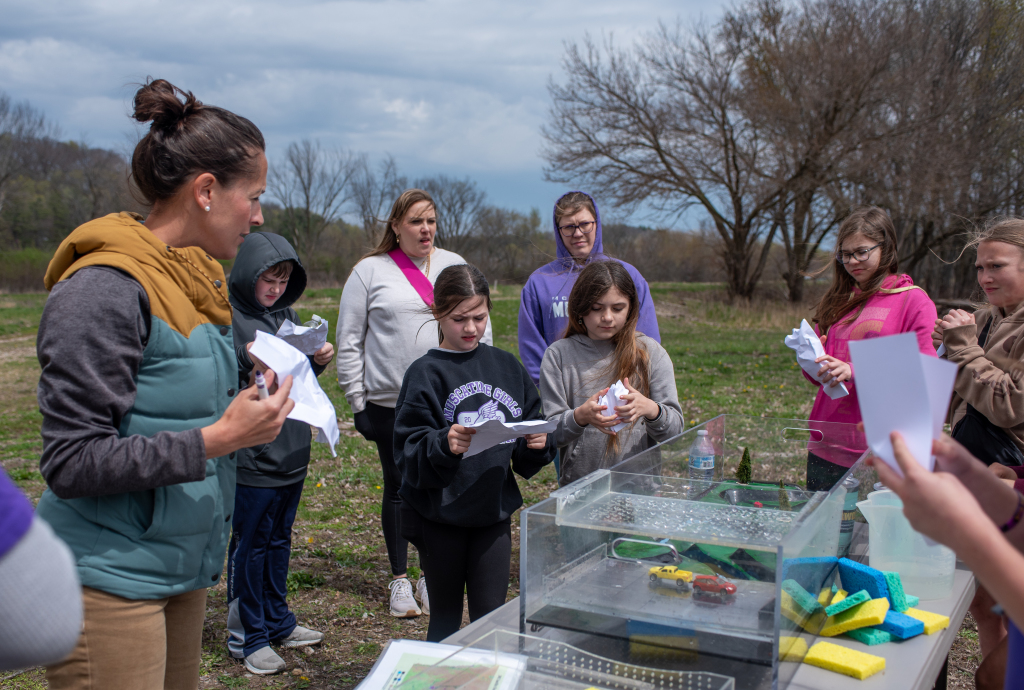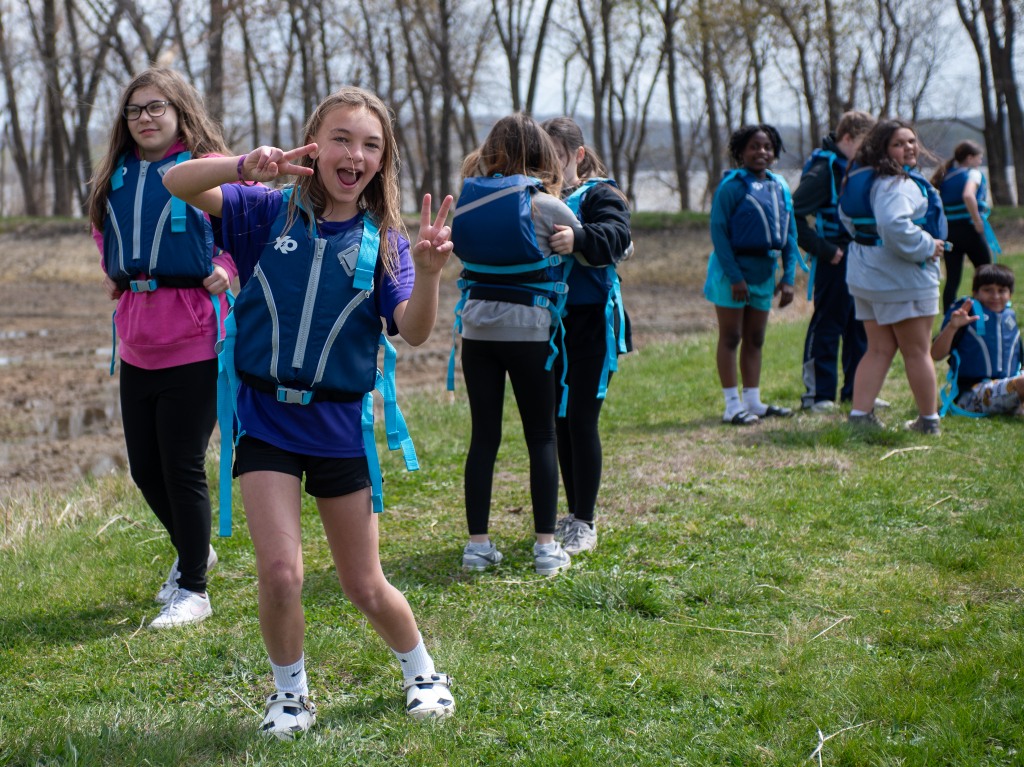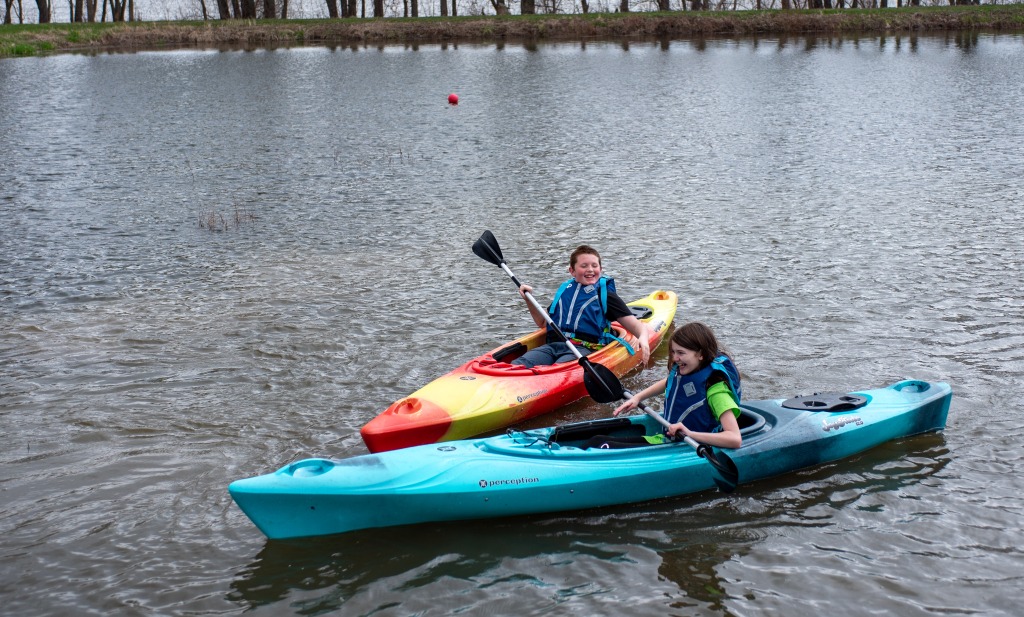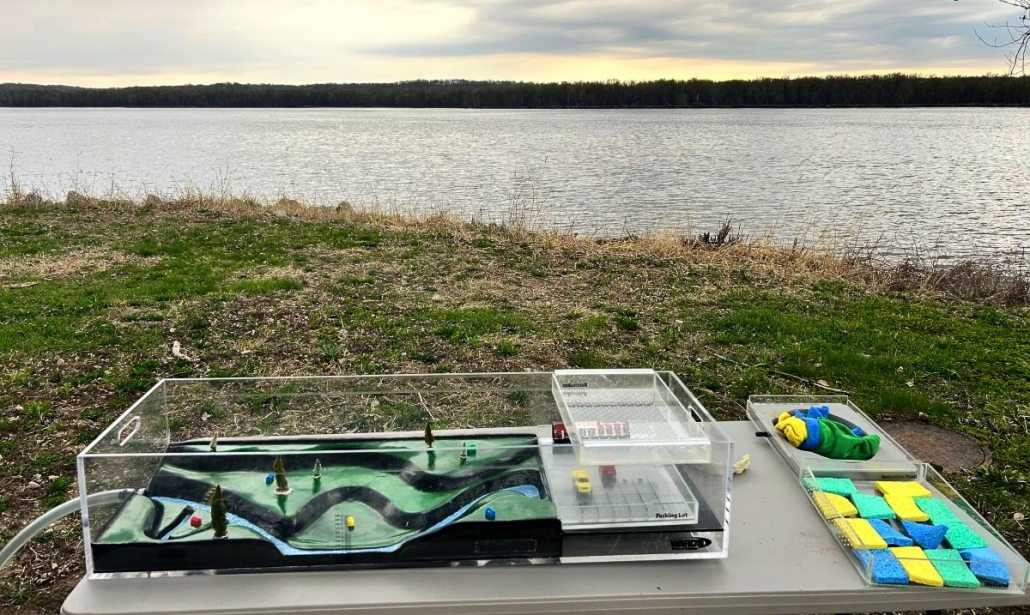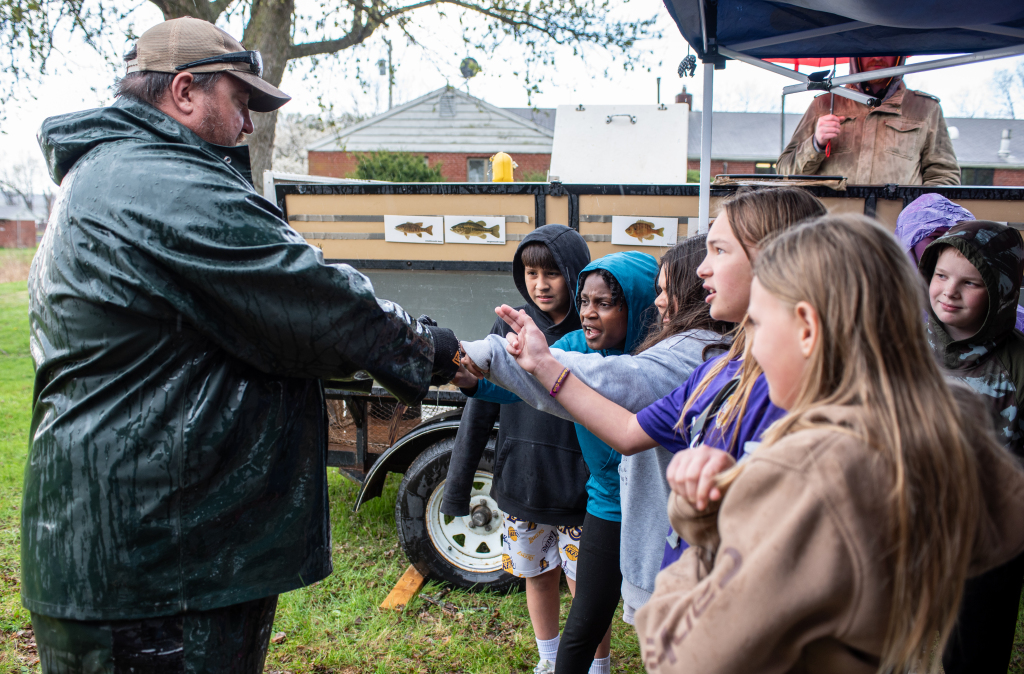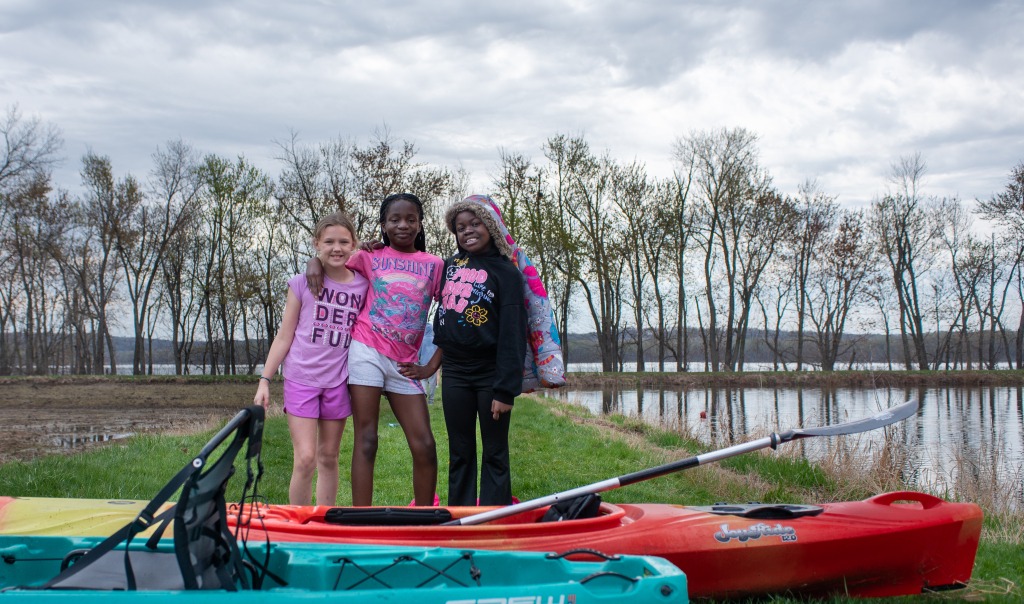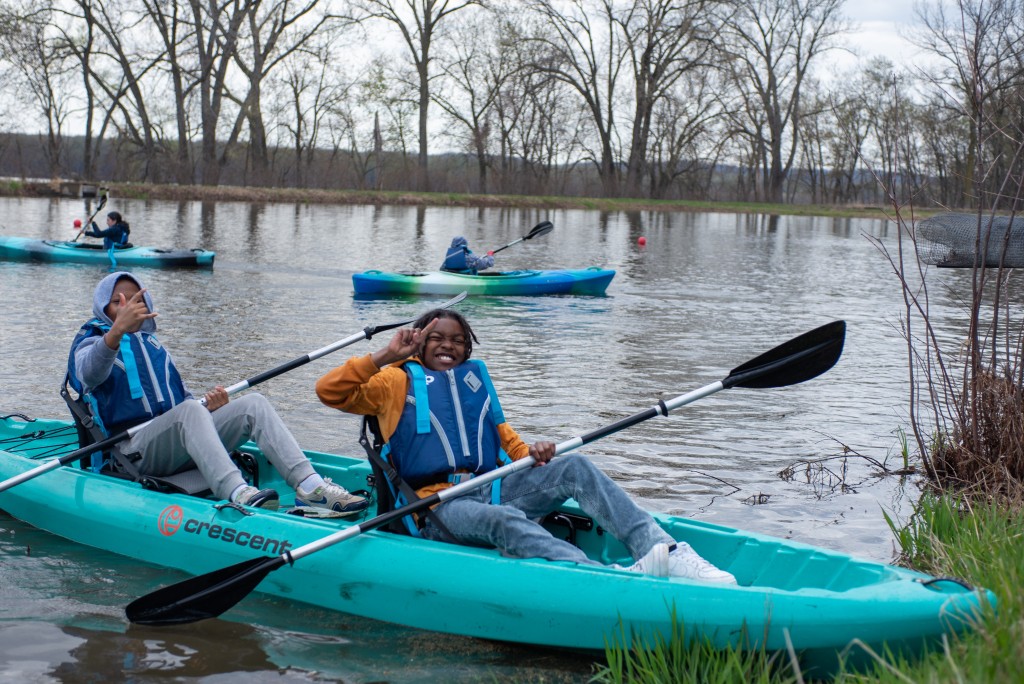Watershed Wisdom: Outdoor Learning Brings Rivers to Life for Muscatine Students
How have we shaped the rivers, and how have they shaped us? This was the question guiding a fun day of outdoor learning for a group of 5th graders from Muscatine Schools. This spring, students visited the University of Iowa’s Lucille A. Carver Mississippi Riverside Environmental Research Station (LACMRERS), that supports research and education at IIHR—Hydroscience and Engineering (IIHR). In partnership with the local fish hatchery managed by the Iowa Department of Natural Resources (DNR) and the Friends of Fairport Fish Hatchery (FFFH), IIHR coordinated a day of fun and interactive learning about the ways our rivers and waterways impact our communities, and how people have interacted with the river over time.
Students explored four stations; kayaking, watershed exploration, a fish hatchery tour, and history station. For many, it was their first time on a kayak or seeing a big fish up close! The activities challenged students to engage with and think about the river system in a new way, reflecting on how the Mississippi River has supported the Muscatine community throughout history.
Staff with DNR’s Fairport Fish Hatchery facilitated students’ observations of Iowa fish species in an aquarium. They discussed the critical role that hatcheries play in restoring ecological balance that can be disrupted by urban development and damming.
“The kids were enthralled seeing some of these fish up close and personal. Having these living creatures really helps the kids connect to the land and water,” says Andy Fowler, Iowa DNR fisheries biologist. “Education is part of our mantra here. More time educating both adults and children is a huge part of our plan going forward.”
IIHR’s Iowa Flood Center team led a watershed exploration hike and demonstration along the Mississippi River. The 5th graders shared about the ways they’ve interacted with the river and if they had experiences with flooding. Using an interactive watershed model and having the students build their own paper watersheds, they learned how land use changes and alterations along the river can impact flooding and solutions to reduce flood impacts.
The FFFH station showed students artifacts from the Historic Fairport Biological Station and discussed how water access has always been central to survival and culture. Among the artifacts were mussel shells and household items left by scientists living and working at the Fairport Biological Station.
“This kind of outreach directly ties into our mission and goals,” said Sandy Stevens, a board member with the FFFH. “We are really trying to educate students and visitors on the history of the hatchery; why it’s there, what’s happening in this area, and have them learn about the mussels and fish that have been a major research focus here in the past. It’s essential to the growth and recognition of this historical and important place.”
Throughout the day, students were encouraged to make connections between what they observed and their interactions with local waterways.
“Our students loved this educational day spent outdoors,” said Konnie Hurlbut, a 5th-grade teacher in the Muscatine School District. “Getting to kayak and see so many fish up close was a huge hit with the kids.”
LACMRERS has a long and storied history, deeply connected to both the local community and IIHR’s legacy of river research. In 1891, the rise of the pearl button industry in Muscatine sparked major changes for the region and the Mississippi River. Mussels were harvested rapidly to meet growing demand, leading to overfishing that depleted their populations. Because mussels play an important role in water filtration, this had a significant impact on the quality of the water.
In response, the Fairport Biological Station was established by the government to study the river ecosystem and support mussel repopulation efforts. Years later, IIHR acquired the facility now known as LACMRERS thanks to a generous gift from the Carver Foundation. The facility supported IIHR’s active mussel and water quality research on the Mississippi River. Today, the station provides students with educational opportunities in water resources, biology, engineering, and more.
Students enjoy stepping into the outdoor classroom for a day and experiencing the connection between humans and their environments. IIHR plans to continue to collaborate with partners in Muscatine to provide learning experiences for K-12 students and the public at LACMRERS.
